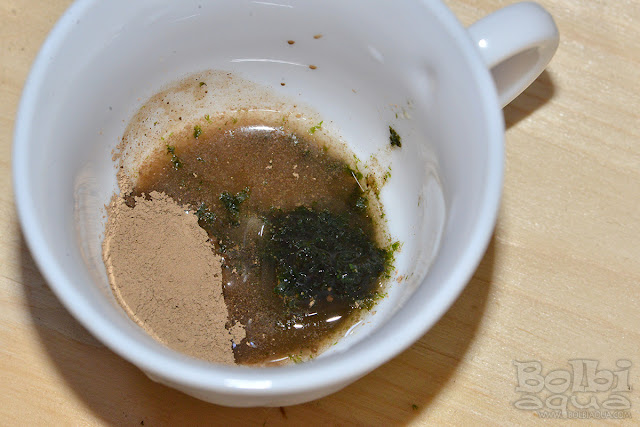Dimensions: 27x20x20cm or 11x8x8" (10 liters) - Optiwhite
Lighting: Chihiros C-Series C301 14W
Filtration: Eden 501 (sponge, ceramic rings, Purolite)
Lighting: Chihiros C-Series C301 14W
Filtration: Eden 501 (sponge, ceramic rings, Purolite)
CO2: No
Substrate: ADA La Plata sand
Hardscape: Black Pagoda stones, Redmoor wood
Fertilization: Plantavit complete 10 drops per week
Water parameters: Temp. 25°C, pH 7.8, KH 7, GH 9, TDS 190
Plants: Fissidens sp. 'Khao Sok', Bucephalandra sp. 'Belindae Mini', Anubias sp. 'Pangolino', Anubias sp. 'Mini Coin', Crepidomanes sp. 'Grape Leaf'
Fish/shrimps: Caridina sp. 'Snow Zebra', Clithon corona
Substrate: ADA La Plata sand
Hardscape: Black Pagoda stones, Redmoor wood
Fertilization: Plantavit complete 10 drops per week
Water parameters: Temp. 25°C, pH 7.8, KH 7, GH 9, TDS 190
Plants: Fissidens sp. 'Khao Sok', Bucephalandra sp. 'Belindae Mini', Anubias sp. 'Pangolino', Anubias sp. 'Mini Coin', Crepidomanes sp. 'Grape Leaf'
Fish/shrimps: Caridina sp. 'Snow Zebra', Clithon corona
Hardscape Construction
For hardscape construction, I use Black Pagoda stone. It has a beautiful texture and a visually striking structure.
Hanging stones can be additionally reinforced by embedding stainless steel wire into the joint. This type of reinforced bond is capable of supporting significantly heavier stones than the one shown here – this is only a demonstration and test.
This side of the stone is intended to rest against the side glass. To prevent reflection and light penetration from behind, the surface must be made flat and fit snugly against the side glass, without any gaps.
To ensure a flat surface, I applied enough adhesive and pressed the stone against the glass, which I had previously covered with household cling film.
After a few minutes, once the adhesive has dried, the film can be easily removed.
I created three separate modules and placed them in the aquarium. The modules are placed on an egg crate to prevent movement.
Redmoor wood was used as a root detail. Since the pieces are very thin, to preserve the wood, I soaked them in super glue to prevent rotting.
Redmoor wood was used as a root detail. Since the pieces are very thin, to preserve the wood, I soaked them in super glue to prevent rotting.
I poured in sand and refined the details. This is the final result.
Planting
Here, the technique of applying Fissidens moss with a brush was used, similar to the Yogurt method, but soil is used instead of yogurt.
Everything is mixed with a small amount of water to create mud.
This mixture is applied to the desired areas using a brush. Before applying the mixture, the entire aquarium needs to be moistened.
Finally, the aquarium is covered with transparent film and kept sealed for the next 2 weeks, with the lighting on and a photoperiod of 10 hours per day. It is advisable to occasionally lightly mist with a spray bottle to prevent the mixture from drying out.
After 2 weeks of dry start for the moss, other plants were added, and the aquarium was flooded.
Day 1
Day 28
Sulawesi shrimps Caridina sp. 'Snow Zebra' and Clithon corona snail have been introduced.
 |
| Caridina sp. 'Snow Zebra' |
 |
| Clithon corona |

































.jpg)













0 comments :
Post a Comment